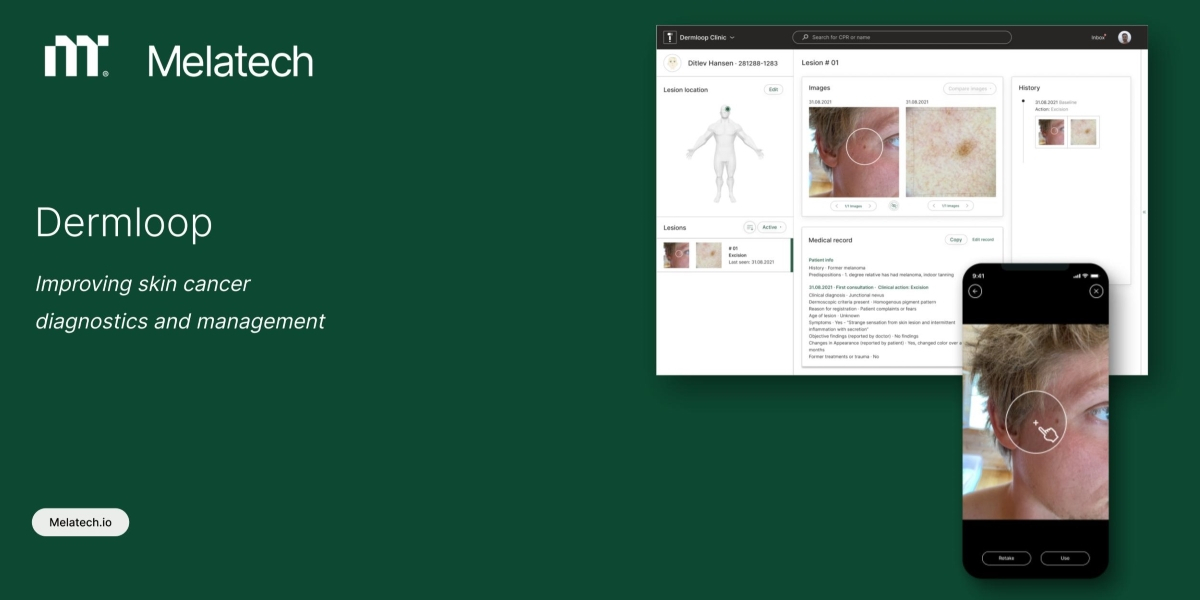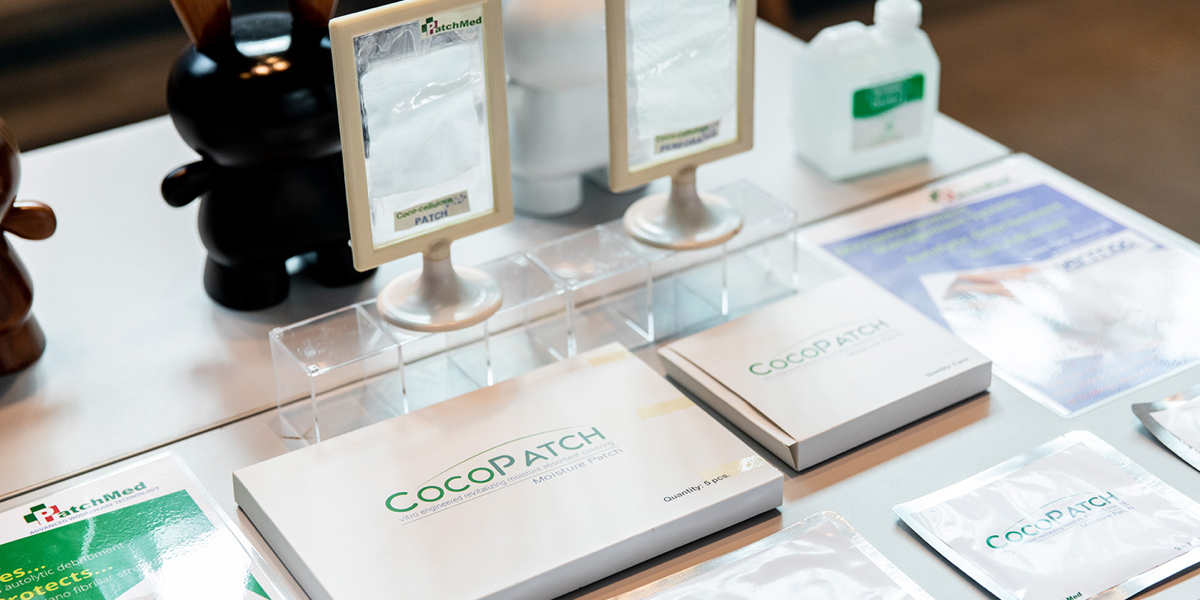AÑO
2023
CATEGORÍA
Cuerpo
OBJETIVOS
Salud y bienestar, Educación de calidad, Reducción de las desigualdades, Equilibrar la inteligencia humana y artificial
PAL. CLAVE
artifical intelligence, healthcare, cancer, photography
PAÍS
Denmark
CRÉDITOS
Melatech (design team: Margarita Genova & Maria Wung-Sung)
LINK
https://dermloop.io
Dermloop
App+webapp that enables doctors to diagnose/photograph skin tumors or refer them to specialists.
How does it work?
Dermloop consists of three apps:
- Capture
Mobile app.
GP creates new patient (CPR scanner reads barcode or CPR nr.). GP creates new skin lesion (e.g. a mole), takes a regular photograph and a dermoscopic photograph, collects medical info about the lesion, and decides on next clinical action (follow-up, referral to teledermatology etc.).
- Desktop
Webapp.
GP can view/edit everything created in capture. Medical info is summarized as prose in "Medical record" which the GP can copy and paste to their primary EMR.
Specialist (e.g. teledermatologist) can view referred cases, evaluate medical history and images, and decide next clinical action (dismissal, surgery etc.).
- Learn
Mobile app.
Allows anyone to train skin lesions diagnostics. AI enables user-specific feedback and case presentation. GPs view their own previous cases in addition to cases from the common database.
Why is it needed?
Skin conditions represent x% of patient inquiries in primary care, with x lesions being referred to dermatologists and x lesions ultimately being removed by plastic surgeons. The wait lists for dermatology and plastic surgery are ever-growing and x% of the surgically removed cases upon pathological examination turn out to be benign i.e. not needing removal. Doctors currently don't have the adequate diagnostic training and resort to "just in case"-referrals while also overlooking a large number of malignant lesions. All of this imposes a huge cost on the Danish health care system as well as a significant loss of life, both preventable.
With Dermloop, GPs gain confidence and skill when diagnosing skin lesions. Fewer patients are referred to specialty care, and the ones who require treatment receive it must faster. Referrals and unnecessary surgeries are reduced by x% and x%, respectively, and data suggests that a significant number of currently missed malignant lesions are caught.
How does it improve life?
The daily life of GPs is made easier by employing Dermloop in their practise. Even when sticking to the current workflow, the automated medical record and smooth image capture decreases time spent per case. In addition, GPs become better and more accurate in skin diagnostics through Dermloop Learn, and Dermloop Capture+Desktop enable most of the initial steps (e.g. image recording and follow-up patient contact) to be handled by nurses and administrative staff.
For patients, the improvements are obvious: Highly trained doctors, improved image documentation, and shorter wait lists all lead to better patient outcomes.
Because benign skin conditions represent a huge portion of primary care patient contacts, when Dermloop is implemented nation-wide, GPs and specialists alike will have more time for other critical work, and the Danish healthcare system will be able to reroute a large portion of resources to other areas.



